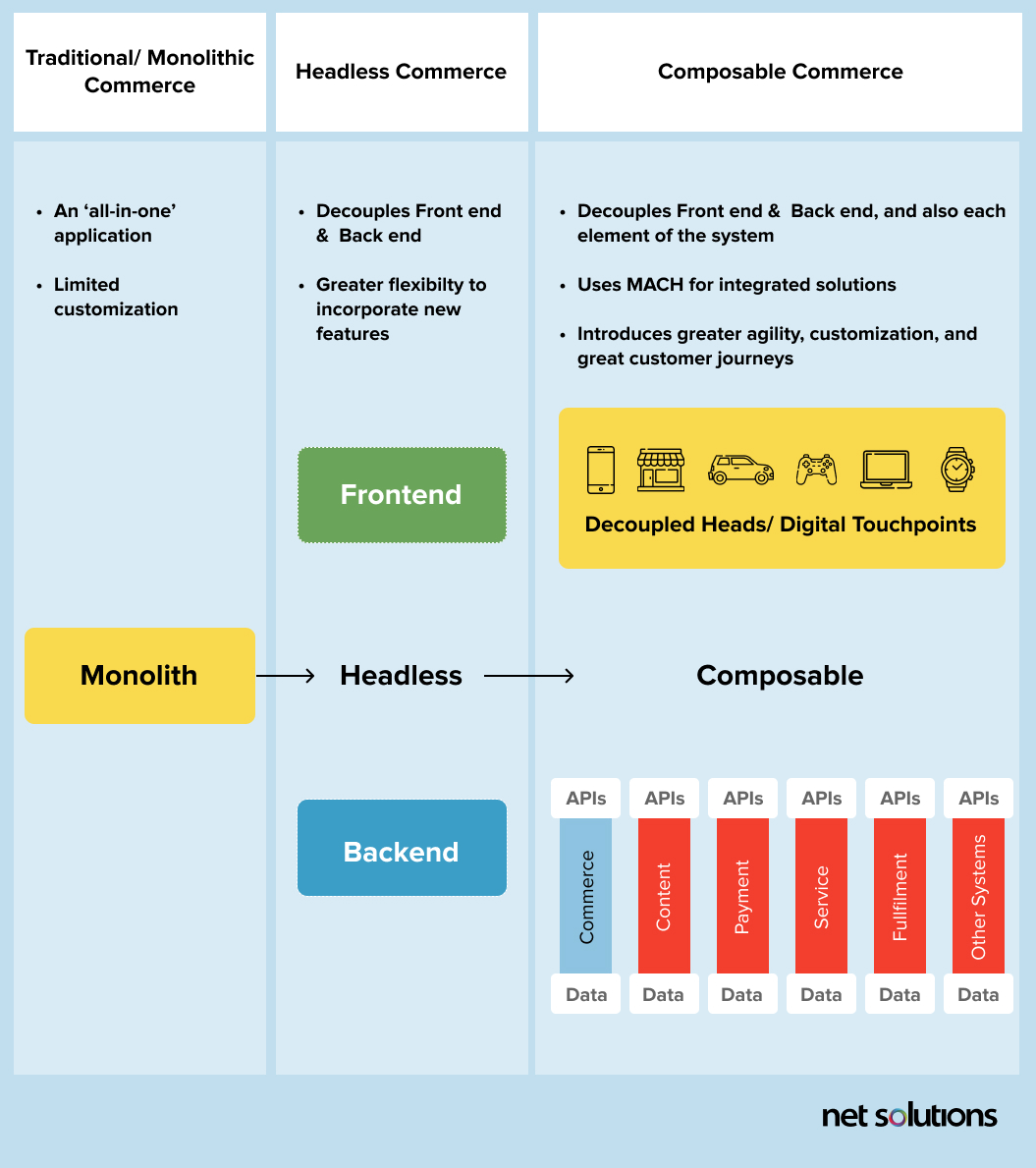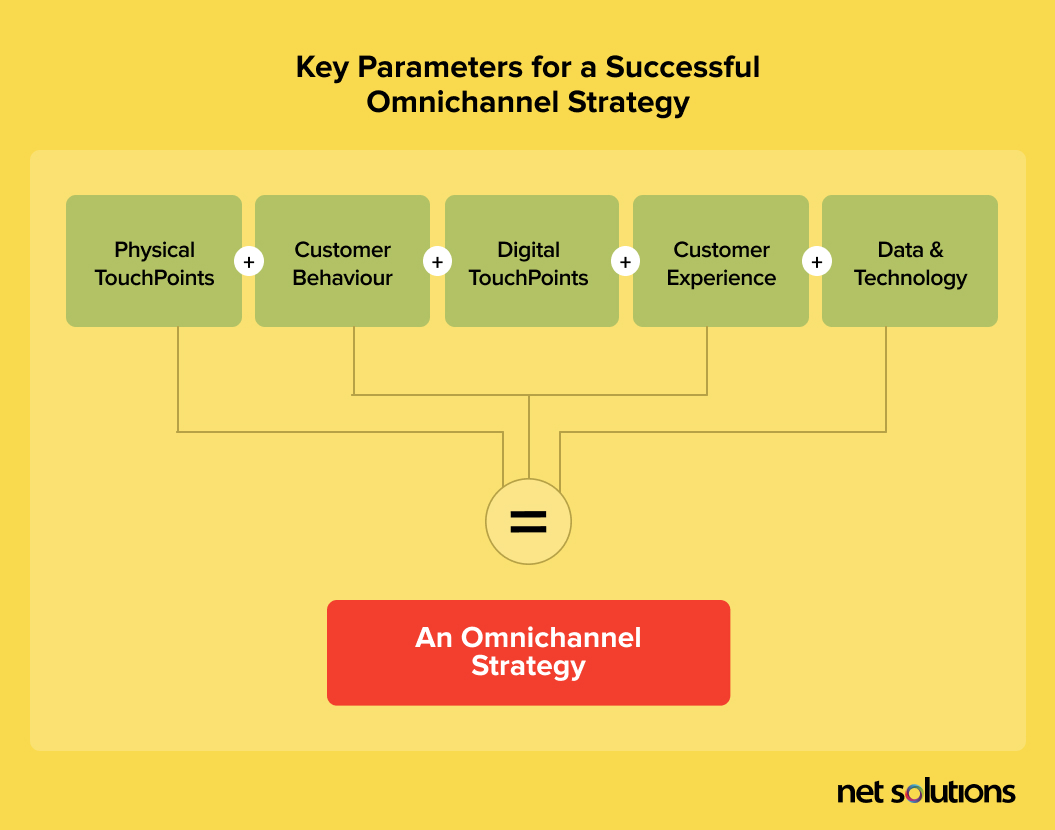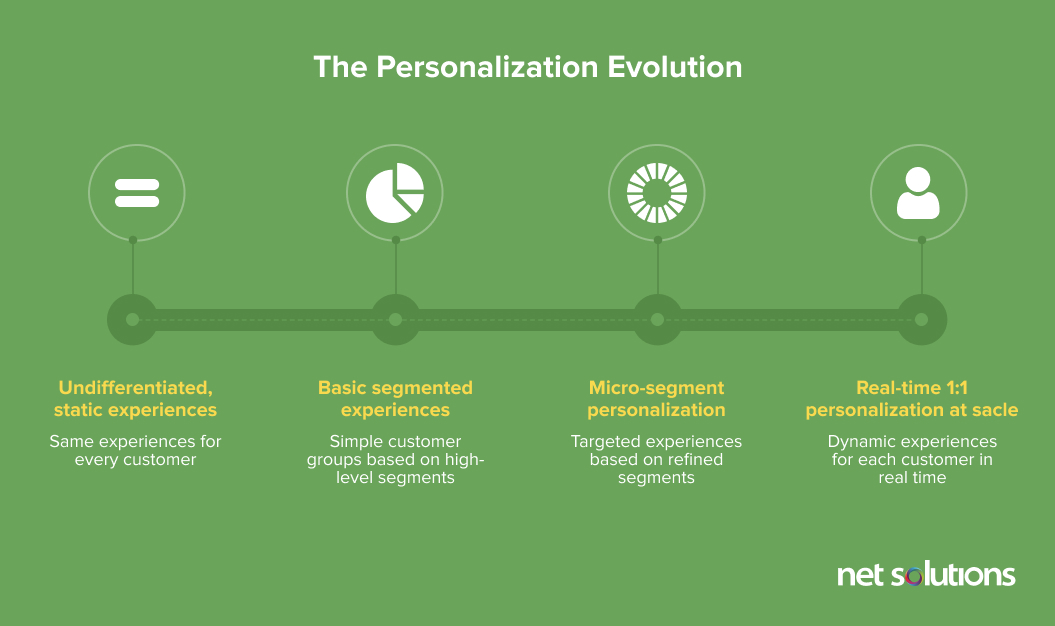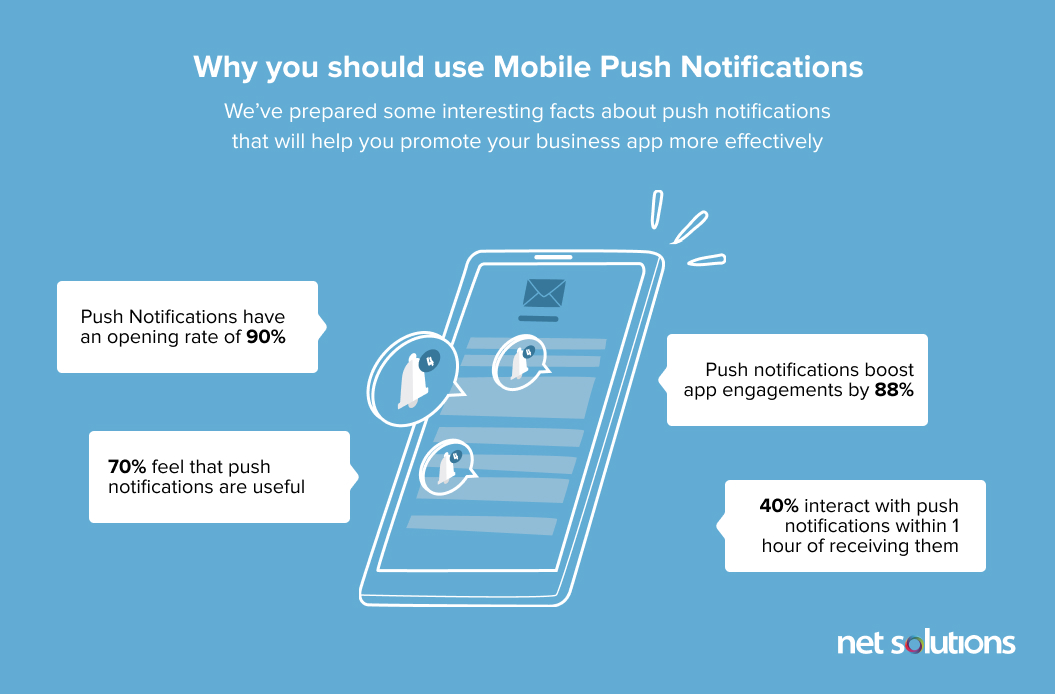Let’s explore the top Adobe Commerce development trends below.
Adobe Commerce (Magento) is a flexible, scalable eCommerce platform designed to power personalized B2C and B2B eCommerce experiences needed to compete today. Today, 85% of the top 100 online retailers in the U.S. use Adobe eCommerce, or 8% of all eCommerce websites around the world.
In this post, we’ll examine the top trends in eCommerce and how Adobe Commerce is helping its customers and their development teams stay ahead of the curve.
Disclaimer: Trends Reflect Capabilities of Adobe Commerce on Cloud
This post will specifically outline the capabilities of Adobe Commerce on Cloud products (Adobe Commerce Pro and Adobe Commerce Managed Services), previously called Magento. Adobe Commerce on Premises and Magento Open Source customers will not have access to the same capabilities as the Adobe Commerce on Cloud solutions. Learn more about Adobe Commerce solutions.
If you are looking to take advantage of all the latest Adobe Commerce has to offer in its platform solution, our experienced Magento developers can help you get there
Top Adobe Commerce (Magento) Trends in 2025
While this post continues to reflect the top B2B eCommerce trends and top B2C eCommerce trends we’ve outlined for 2025, this post will dive deeper in best practices for developers on Adobe Commerce, giving tangible advice on how developers can approach these trends with the help of Adobe Commerce and its continued investment in innovation to support the future of commerce.
1. Headless & composable commerce
As the number of channels and devices expand and omnichannel content delivery becomes important, and driven by consumer expectations around personalization, developers are increasingly leveraging headless commerce and composable commerce, a way of decoupling eCommerce architecture to introduce more flexibility to push personalized content from a decoupled backend to an infinite number of independent, optimized frontends, and adding composability to back-end systems. Headless Commerce is projected to reach USD 1.7 billion by 2031, growing at a 22.6% CAGR.
Adobe Commerce is a flexible platform that can be deployed as a fully headless and composable digital commerce solution, delivering data from one back end to any front-end, including PWA Studio or custom front-end(s), helping accelerate development and time to market for new innovations. In the past two years, Adobe expanded its capabilities with the Adobe Developer App Builder to deliver headless capabilities using API Mesh and recently expanded support for webhooks.

2. Progressive Web Apps (PWA)
A progressive web application (PWA) is a fusion of web and native mobile apps, a specifically designed website that resembles and behaves like a mobile app (better loading speed and user experience). Using responsive design and other optimization strategies, PWAs can also be faster than native mobile apps, and are less likely to be forgotten in a myriad of device app icons.
Adobe’s PWA Studio was created to help Adobe Commerce developers quickly build and launch a PWA storefront. Since the tools are integrated, PWA Studio is one of the fastest ways you can launch a PWA. Additionally, with Adobe Commerce and PWA Studio, the storefront can be hosted with the back-end, unlike other headless front-ends that require additional hosting.
3. Omnichannel retailing
Omnichannel retail strategies are designed to support a consistent customer experience across multiple touchpoints (devices and channels e.g. web, mobile, search, social media) and experiences. In fact, brands that invest in omnichannel strategies retain an average of 89% of customers, while the average for those that do not is just 33%. Omnichannel expectations are one of the primary drivers for headless and composable commerce.

Adobe Commerce is designed to help support “channel-less” omnichannel experiences for both B2B and B2C, linking all channels and touchpoints into a cohesive experience for consumers and B2B buyers and a cohesive backend with analytics, or integrated with Customer Journey Analytics for deeper cross-channel analytics.
4. Real-time personalization
Personalization in UX (user experience) is the ability to tailor customer experiences based on previous purchases and/or browsing-based data. Today, 89% of business leaders agree personalization is key to business success, making it critical to remove siloed data and leverage tools capable of real-time personalization.

Adobe has doubled down on personalization with the Adobe Experience Platform, with products built on top including the Journey Optimizer (Available to support Adobe Commerce B2B), CDP, and Marketo Engage automations, as well as native AI-powered personalization in Adobe Commerce such as Live Search recommendations, promotions, content and intelligent category merchandising.
5. Expanded use of artificial intelligence (AI) and generativeAI (genAI)
AI-enabled eCommerce is a big and growing market, estimated to reach $16.8 billion by 2030, being used to improve customer experience, support lead generation and marketing, manage the supply chain, optimize merchandising, adjust pricing, improve forecasting, automate workflows and more. Nearly 90% of senior executives claim to have or are working / planning on a generative AI roadmap with clear business goals.
Adobe Commerce has been continuing to release updates to its native AI capabilities for marketing and merchandising, as noted above, or extend with the genAI-powered Dynamic Chat (chatbot), marketing automations of Marketo Engage, or the newly announced genAI Content Hub to manage content at scale and with greater governance control. Further, the latest shift to a composable development framework is helping developers move quickly to support the integration and use of new AI opportunities.
6. Conversational commerce & the growth of chatbots
Conversational commerce is the use of chat and voice to engage with customers in real-time. GenAI is powering today’s chatbot experiences, which are expected to become the primary customer service channel for a quarter of today’s organizations. While 44% of customers are asking for self-support tools to be better, an even greater percentage (49%) rate chatbot experiences as “very poor,” “poor,” or only “adequate,” most often because a successful chatbot has access to a breadth of data, and data is often siloed.
Adobe Experience Cloud products (including Adobe Commerce) works seamlessly with its Real-Time Customer Data Platform and integrates seamlessly with your other internal systems (e.g. CRM) to become a single source of truth for customer data, helping empower positive chatbot experiences. Adobe Commerce can be integrated with several chatbot options, including its own Adobe Dynamic Chat.
7. Enhanced product information management (PIM)
A recent IDC study confirmed that headless commerce helps facilitate continuous adaptation, but that the demand further extends to the need to integrate with product information management (PIM) to manage product listings and catalogs with improved workflows and scalability. For example, a PIM such as Akeneo (via connector) can assign product assets to a hierarchy of catalogs that can be matched with campaigns, making it easier to launch or update new content for omnichannel experiences.
8. Multi-vendor marketplace management
A multi-vendor platform or marketplace is an online store that provides consumers with the opportunity to shop for products and services from multiple vendors. While Amazon and Alibaba may come to mind, marketplaces are a growing trend, fueling the fastest growing B2B companies and with B2C marketplaces doubling in the past six years.
Adobe Commerce offers flexibility to build and manage online marketplaces that source products from multiple vendors using one of several marketplace extensions including Webkul, QBurst, or PurpleTree.
9. Utilization of push notifications
Push notifications are messages that notify users of something from a mobile app (e.g a promotion or shopping cart reminder), even if the user does not have that app open. While users must opt in to these notifications, push notifications can be an effective marketing tactic, particularly when combined with personalization.

Developers wanting to utilize push notifications will first need to create a mobile app or PWA, then access push notifications in different ways, depending on the platform. For example, Apple Push Notifications use an API, while Google and Amazon require the use of backend-as-a-service (BaaS) software. Adobe Commerce developers can choose Adobe Campaign for push notifications, a third party extension (e.g. Firebase for Google), or a custom solution.
Want help creating a mobile app for your eCommerce store? We can help.

10. Optimization for visual & voice search
The eCommerce industry is seeing a boom in the use of visual search and voice search. Visual search is often AI-powered to help consumers search for products using images (e.g. an example image buyers provide) rather than text-based queries, while voice search uses voice input to complete a search, a subset of voice commerce. Both visual and voice search are top trends of the year.
Developers interested in either AI-enhanced visual search will need to rely on third-party services (e.g. (Fast Simon) while voice can be boosted by the use of Adobe’s Voice Assistant Analytics, which can capture voice from interfaces such as Alexa and Siri, or third-party options (e.g. Aitoc).
11. Buy Now Pay Later (BNPL)
From January to June 2024, $39.7 billion (7.9%) of eCommerce spend took advantage of Buy Now Pay Later (BNPL) options for short or long-term payment plans. There are many different kinds of payment plans, so the choice in BNPL provider depends on your business. The Adobe Assurance Program lists Affirm as a Gold partner, but other extensions include Afterpay, Klarna and more.
12. Multi-store and multi-currency handling
Adobe Commerce was built for both horizontal and vertical scaling to support businesses as they grow, including capabilities to oversee B2C and B2B sites and marketplaces from one interface, up to hundreds of storefronts at scale across brands, catalogs, countries and currencies.
While this pounds complicated, multichannel commerce can be configured following Adobe’s configuration guide for multi-stores, with special attention to expanded needs for global payment services. As you expand, it is critical that your architecture is set up to handle an increased number of stores and the increased volume of catalog data, which could impact performance if not correctly configured. If you need help, our experienced Adobe Commerce developers can audit your architecture and help you get started.
13. Subscription services
The subscription economy has grown from $650 billion in 2021 to an anticipated $1.5 trillion by 2025 for B2C and B2B eCommerce business models.
In 2024, Adobe partnered with Zuora to add subscription revenue streams to Adobe Commerce available as a front-end extension, created using Adobe’s App Builder framework for composable development. The new integration offers over 50 different subscription pricing models and advanced capabilities to combine subscription with other products on a single unified invoice.
14. Augmented and virtual reality features
Augmented reality (AR) overlays and virtual reality (VR) simulations are both emerging as new ways to engage with customers in a non-traditional shopping format, helping deliver those unique experiences consumers demand, increasing conversion (up to 94%), and reducing returns (after all, you’ve ‘tried on’ an outfit / makeup / piece of furniture or have viewed an interactive product demonstration).
Adobe Commerce released an AR Viewer extension to bring AR capabilities to the buying process, supporting an immersive product experience from any mobile device.
What is the Future of Adobe Commerce?
Adobe Commerce is a cutting-edge commerce platform, committed to integrating the latest trends powered by AI and 3D technologies, and adapting the base Magento 2 platform to be more flexible and composable to drive transformative business outcomes. Today, Adobe Commerce developers are 50% more productive and develop new features 67% faster than other platforms, leading to an ROI over three years of 247%.
Based on this commitment, and Adobe’s own analysis of eCommerce trends for 2024, we would expect Adobe to continue to release AI capabilities (likely around content creation and SEO workflows as well as analytics), to increase AI in B2B (possibly around alternative pricing capabilities), and greater use of AI in customer service, whether that’s chatbots or AI-generated customer support materials.
If you are still on Magento Open Source, read our ultimate comparison guide for Magento Open Source vs Adobe Commerce – and what kind of ROI you can expect from upgrading.
Wrapping Up
If you are a developer or business owner looking to the future of Adobe Commerce, it can be difficult to navigate the myriad of Adobe and third-party integrations or to know when a custom integration is better suited to your business goals.
If you’re ready to optimize your Adobe Commerce store (or your Magento store, if you use Magento Open Source) with the latest development trends and functionality, a partnership with Net Solutions can help accelerate your time-to-market. See the difference our Magento Development Services can make for you.



